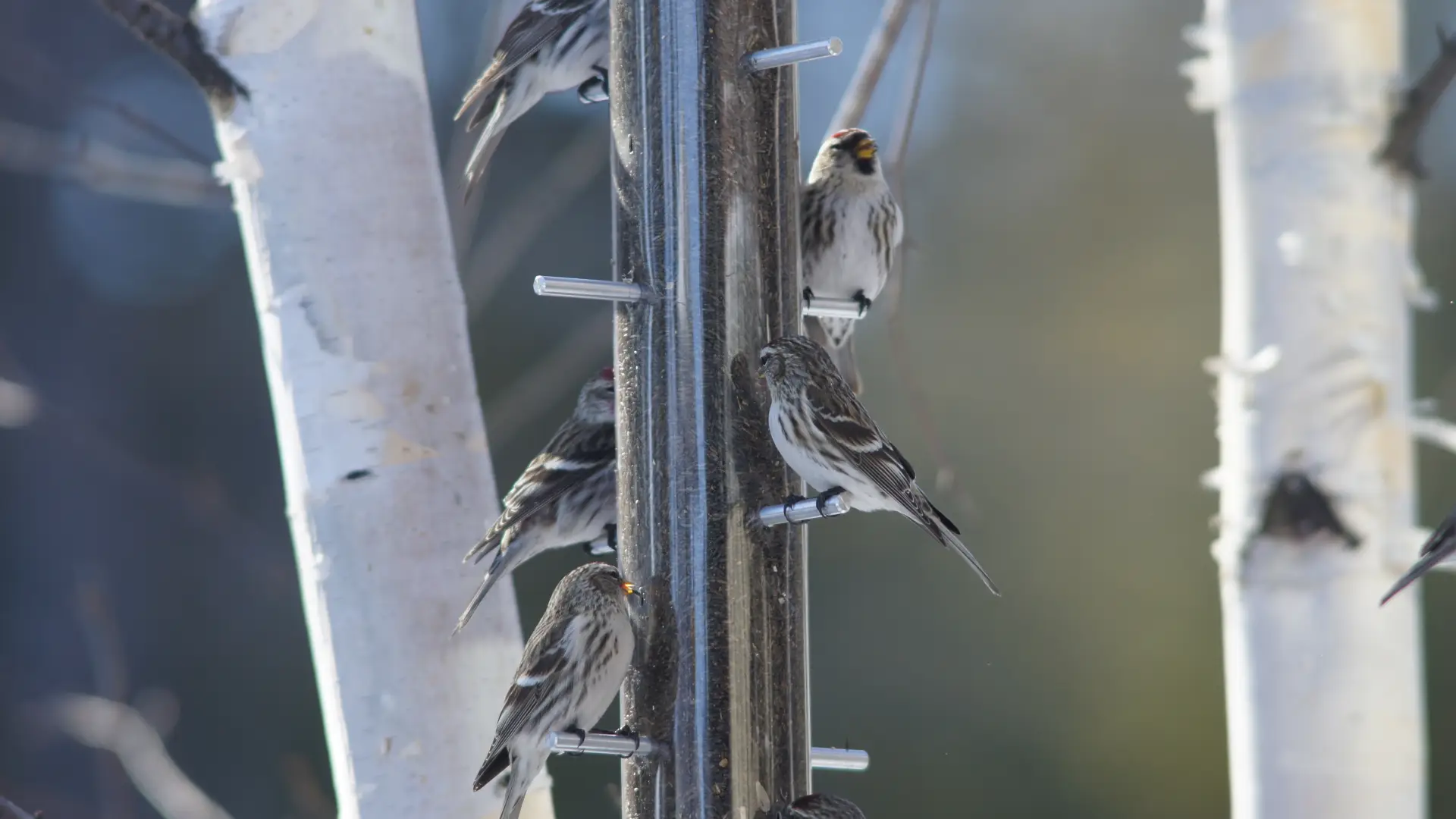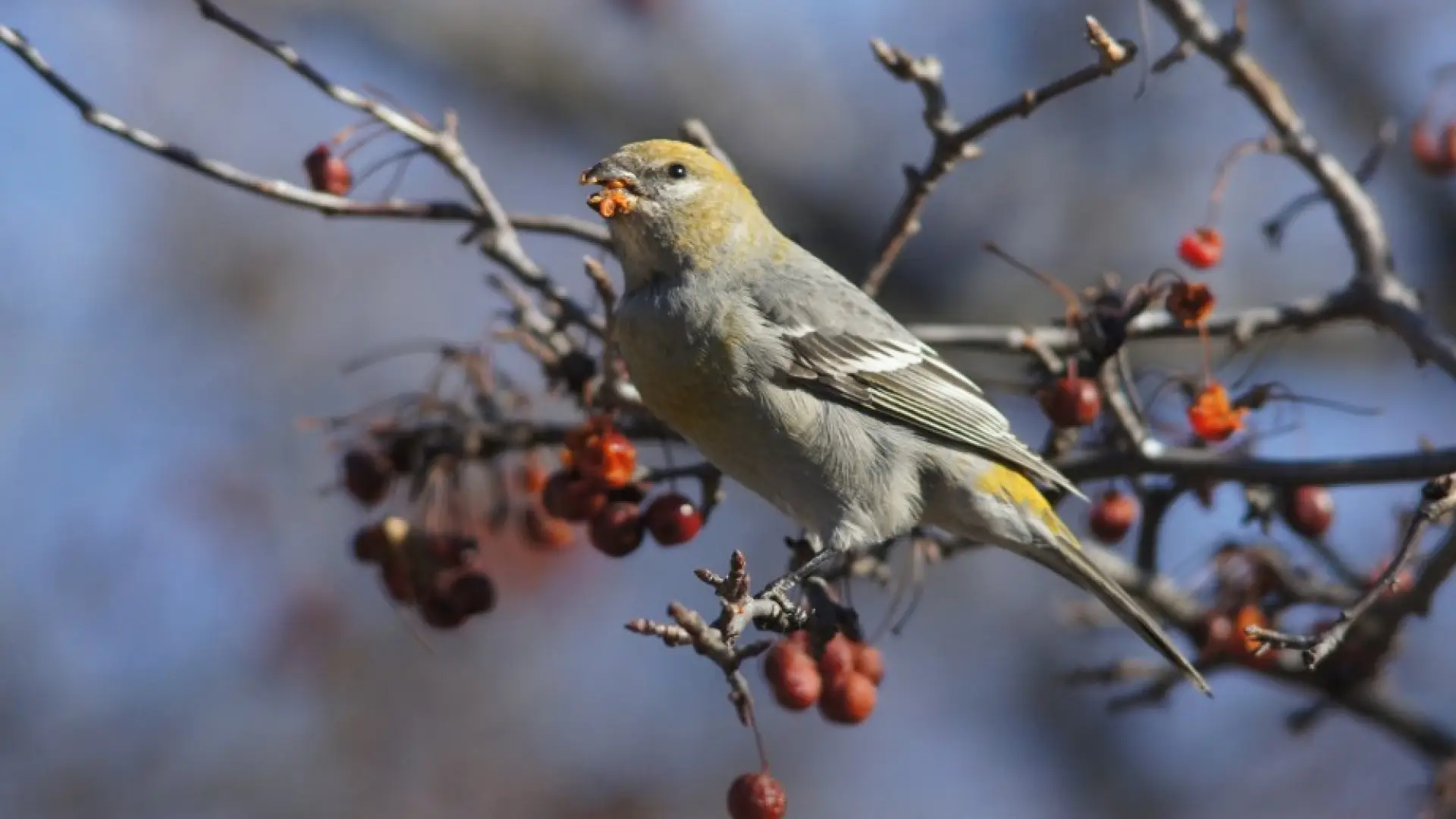
The fall and beginning of winter here in the Adirondacks were marked by a big movement of finches from the north. White-winged and red crossbills and pine siskins moved into and straight through our area in search of food. Many of the birds ended up much further south of the area in the Mid-Atlantic and southeast states. Evening grosbeaks likewise moved much further south than they usually do as many of our trees this year produced paltry quantities of the mast and seeds which they eat.
As fall lengthened and winter began, common redpolls and pine grosbeaks – the most uncommon winter finch to find on most years – moved into our area. Their numbers waxed and then quickly waned as the birds dispersed. While many of these birds stayed in our region, they were scattered across a wide area in search of food. And so this historic movement of finches has come in waves and at times this winter they have actually been difficult to find given their far flung food-finding travels.

But, now that the sun is swinging back north, these birds which have been scattered across the Adirondacks and well beyond will begin to move back north and will likely come again through our region. For instance, common redpoll flocks, which although present all winter, seemed to thin a bit as the winter continued. These flocks are now growing again as the birds are returning north. The flock in my neighborhood consistently visits my bird feeders, and the other day I visited a property in Lake Placid where a flock of about 300 redpolls were feeding at the string of bird feeders there. My friend the landowner said their numbers have been growing steadily.
We searched through the flock of redpolls and found a female hoary redpoll – a much less common species in the lower forty-eight states due to their far northern distribution. Hoary redpolls are characterized by an overall pale appearance, and this far south they are generally only found in large flocks of common redpolls. There have been growing numbers of reports of hoarys across the North Country and in neighboring states such as Vermont. So birdwatchers who wish to see a hoary redpoll may find that now is a good time to look for them at Adirondack feeders.

In addition, there have been some recent reports of crossbills and pine siskins, and there appear to be increased numbers of reports regarding pine grosbeaks. Pine grosbeaks do not move south into the Adirondacks on a regular basis, but did so this year as the other finch species did because of poor food sources up north. This was exciting for birdwatchers, but then for a while the grosbeaks were seldom seen. But now they are getting reported more widely again, perhaps indicating they are starting to move back north from where they had scattered.
And so March may shape up to be a good month to see many of these northern finch species as they trickle back north with the thawing snow. But the window for seeing some of these species will be fairly brief. Once they clear out of the Adirondacks, many of them will move well north of the park and it may be a while before they return. So if you are thinking of finding some northern finches, now may be your chance.